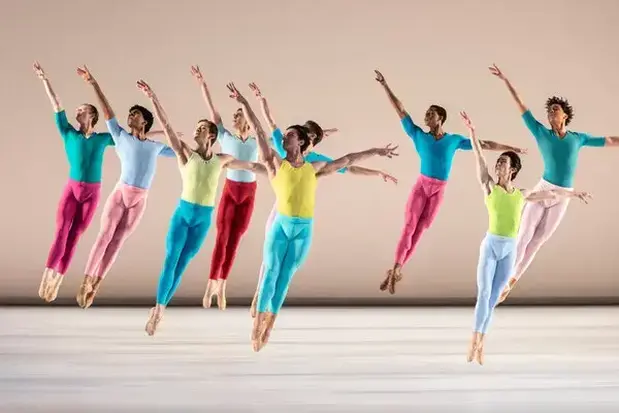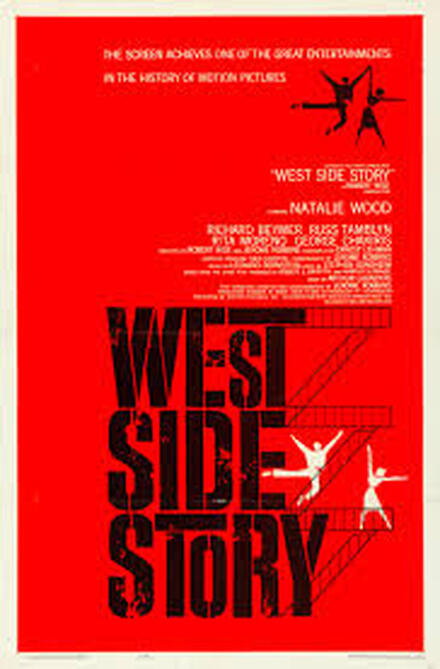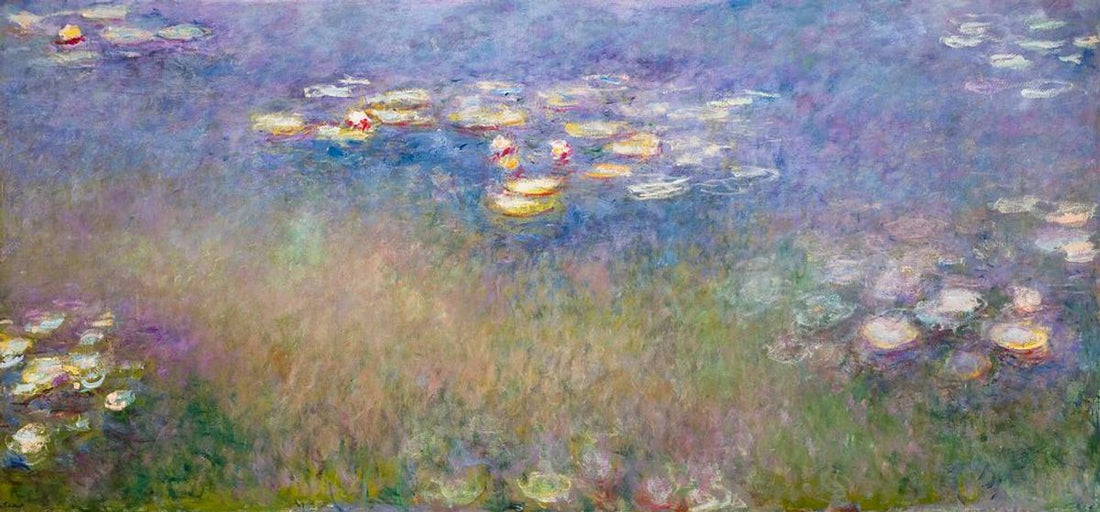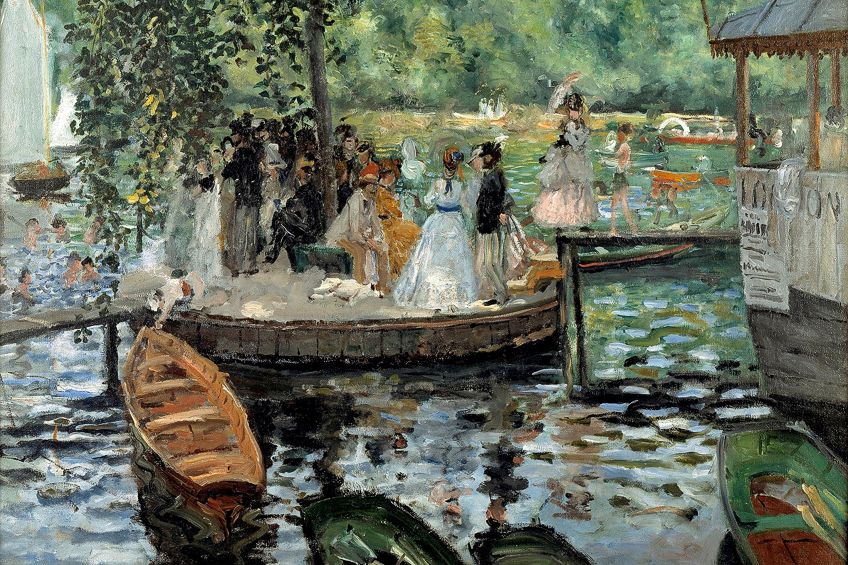__________________________________
End of the Romantics
&
Beginning of the 20th Century
(Mussorgsky: Night on Bald Mountain)
_______________________________________________________________________________________
&
Beginning of the 20th Century
(Mussorgsky: Night on Bald Mountain)
_______________________________________________________________________________________
Lecture #8a
Post-Romantic Music and
Music in The Twentieth Century
Post-Romantic Music and
Music in The Twentieth Century
Post Romantic
Impressionism
Art & Music
Impressionism
Art & Music
Impressionism:
Debussy - Clair de Lune
Debussy - Arabesque No.1
Satie - Gymopedie No.3 (piano)
Satie - Gymnopedie No.3 (orchestra)
____________________________________________________________________________________
Debussy - Clair de Lune
Debussy - Arabesque No.1
Satie - Gymopedie No.3 (piano)
Satie - Gymnopedie No.3 (orchestra)
____________________________________________________________________________________
To view in Full Screen
CLICK
Romantic/Impressionism
Art/Music Vimeo Video
Below: Abstract Expressionism
CLICK
Romantic/Impressionism
Art/Music Vimeo Video
Below: Abstract Expressionism
Location Modern-Art Videos
3. Stedelijk Modern Art (Amsterdam 2013)
4. Matisse-MFish Youtube (Amsterdam 2015)
3. Stedelijk Modern Art (Amsterdam 2013)
4. Matisse-MFish Youtube (Amsterdam 2015)
More 20th Century Music
Schoenberg - Piano Concerto op.42 (class: 0-3:46)
Stravinsky: Rite of Spring (class: 3:40-5:27)
Berg- Wozzeck "Act 3 Scene 4" (0-2:14)
Charles Ives - Three Quarter-Tone Pieces [1/3] (class: 0:21-1:50)


Text Starts Here
The years spanning the end of the nineteenth century and the earliest part of the twentieth were a time of great expansion and development of, as well as a dramatic reaction to, the prevailing late Romanticism of previous years. In music, as in all the arts, expression became either overt (as in the early symphonic poems of Richard Strauss (1864-1949), the huge symphonies of Gustav Mahler, or the operas of Giacomo Puccini), or was merely suggested (as in the so-called "impressionist" music of Claude Debussy. The previous century's tide of Nationalism found a twentieth century advocate in the Hungarian Béla Bartók.
It was a time of deepening psychological awareness, with the works of both Nietzsche and Freud in circulation; and the horrors of the First World War brought death and destruction to the very doorsteps of many people living in Europe. Possibly in reaction to such influences, the expressionistic music of Arnold Schoenberg and his disciples germinated and flourished for a time. Experimentation and new systems of writing music were attempted by avant-garde composers like Edgard Varèse and although none gained a foothold with the public, these techniques had a profound influence on many of the composers who were to follow.
Twentieth-century music has seen a great coming and going of various movements, among them post-romanticism, serialism and neo-classicism in the earlier years of the century, all of which were practiced at one time or another by Russian composer Igor Stravinsky. More recently, aleatory or "chance" music, neo-romanticism, and minimalism have been in vogue by a handful of American composers. With the commercial dissemination of music through the various media providing music as a constant background, the general populace has largely dismissed much of the music produced using bold, new, or experimental styles, preferring to turn to the forms and genres (and often the composers) with which it is most familiar. Many of the greatest and best-known composers of this century, including Russian composers Sergei Rachmaninoff, Sergei Prokofiev, and Dmitri Shostakovich, and British composer Benjamin Britten, have been those who have written music directly descended from the approved models of the past, while investing these forms with a style and modernistic tone of their own.
The years spanning the end of the nineteenth century and the earliest part of the twentieth were a time of great expansion and development of, as well as a dramatic reaction to, the prevailing late Romanticism of previous years. In music, as in all the arts, expression became either overt (as in the early symphonic poems of Richard Strauss (1864-1949), the huge symphonies of Gustav Mahler, or the operas of Giacomo Puccini), or was merely suggested (as in the so-called "impressionist" music of Claude Debussy. The previous century's tide of Nationalism found a twentieth century advocate in the Hungarian Béla Bartók.
It was a time of deepening psychological awareness, with the works of both Nietzsche and Freud in circulation; and the horrors of the First World War brought death and destruction to the very doorsteps of many people living in Europe. Possibly in reaction to such influences, the expressionistic music of Arnold Schoenberg and his disciples germinated and flourished for a time. Experimentation and new systems of writing music were attempted by avant-garde composers like Edgard Varèse and although none gained a foothold with the public, these techniques had a profound influence on many of the composers who were to follow.
Twentieth-century music has seen a great coming and going of various movements, among them post-romanticism, serialism and neo-classicism in the earlier years of the century, all of which were practiced at one time or another by Russian composer Igor Stravinsky. More recently, aleatory or "chance" music, neo-romanticism, and minimalism have been in vogue by a handful of American composers. With the commercial dissemination of music through the various media providing music as a constant background, the general populace has largely dismissed much of the music produced using bold, new, or experimental styles, preferring to turn to the forms and genres (and often the composers) with which it is most familiar. Many of the greatest and best-known composers of this century, including Russian composers Sergei Rachmaninoff, Sergei Prokofiev, and Dmitri Shostakovich, and British composer Benjamin Britten, have been those who have written music directly descended from the approved models of the past, while investing these forms with a style and modernistic tone of their own.

Giacomo Puccini
Born: Lucca, December 22, 1858
Died: Brussels, November 29, 1924
Continuing in the Italian operatic tradition of Verdi, Puccini is remembered for having composed several of the most popular operas in the standard repertoire. His works largely fall into the realm of verismo, or "realistic" opera, in which everyday characters live, love and suffer amidst contemporary settings. His works are noted for their gorgeous melodies, creative orchestration, and dramatic, even sentimental, plots. Puccini treats the orchestra as a continuous means of conveying the drama, with arias, duets and ensembles developing naturally out of the musical flow. Some of Puccini's best-loved operas include Madama Butterfly, Tosca, and La Bohéme. The love duet from Act I of La Bohéme is a fine example of Puccini's rich melodic style.
Born: Lucca, December 22, 1858
Died: Brussels, November 29, 1924
Continuing in the Italian operatic tradition of Verdi, Puccini is remembered for having composed several of the most popular operas in the standard repertoire. His works largely fall into the realm of verismo, or "realistic" opera, in which everyday characters live, love and suffer amidst contemporary settings. His works are noted for their gorgeous melodies, creative orchestration, and dramatic, even sentimental, plots. Puccini treats the orchestra as a continuous means of conveying the drama, with arias, duets and ensembles developing naturally out of the musical flow. Some of Puccini's best-loved operas include Madama Butterfly, Tosca, and La Bohéme. The love duet from Act I of La Bohéme is a fine example of Puccini's rich melodic style.

Benjamin Britten
Born: Lowestoft, Suffolk, November 22, 1913
Died: Aldeburgh, December 4, 1976
Britten began his musical studies at an early age, and although his earliest works are mostly for instrumental forces, he is perhaps best known for his choral and vocal music, especially his operas. Much of his vocal music was composed for his life-long partner, the tenor Peter Pears, and their artistic collaboration is one of the greatest in music history. Britten's musical idiom is largely in a post-romantic style, with liberal doses of pungent dissonances.
Britten's greatest work is most likely his first opera, Peter Grimes, and the Four Sea Interludes are well-known. Premiered in 1945, it was with this work that Britten scored his first international triumph. The opera tells the story of a social outcast, the fisherman Grimes, who, suffering at the hands of an unsympathetic society and in attempting to find acceptance by that society, brings about his own tragic downfall. The theme of the individual against society is one that recurs in many of Britten's operatic works.
A pacifist, Britten composed the War Requiem to express his hope that the world can lay war to rest. The work is comprised of a setting of the Catholic Mass, juxtaposed with nine poems by the English poet Wilfred Owen, a soldier killed during the last days of World War I. The Requiem is scored for chorus, orchestra, children's chorus, chamber orchestra, and three vocal soloists. Britten's intention was to have a Russian soprano singing the sections of the Latin Mass, while the English poems were to be sung by a British tenor and a German baritone.
Text Ends Here
_____________________________
Born: Lowestoft, Suffolk, November 22, 1913
Died: Aldeburgh, December 4, 1976
Britten began his musical studies at an early age, and although his earliest works are mostly for instrumental forces, he is perhaps best known for his choral and vocal music, especially his operas. Much of his vocal music was composed for his life-long partner, the tenor Peter Pears, and their artistic collaboration is one of the greatest in music history. Britten's musical idiom is largely in a post-romantic style, with liberal doses of pungent dissonances.
Britten's greatest work is most likely his first opera, Peter Grimes, and the Four Sea Interludes are well-known. Premiered in 1945, it was with this work that Britten scored his first international triumph. The opera tells the story of a social outcast, the fisherman Grimes, who, suffering at the hands of an unsympathetic society and in attempting to find acceptance by that society, brings about his own tragic downfall. The theme of the individual against society is one that recurs in many of Britten's operatic works.
A pacifist, Britten composed the War Requiem to express his hope that the world can lay war to rest. The work is comprised of a setting of the Catholic Mass, juxtaposed with nine poems by the English poet Wilfred Owen, a soldier killed during the last days of World War I. The Requiem is scored for chorus, orchestra, children's chorus, chamber orchestra, and three vocal soloists. Britten's intention was to have a Russian soprano singing the sections of the Latin Mass, while the English poems were to be sung by a British tenor and a German baritone.
Text Ends Here
_____________________________
Brief Summary of
“Music in the Romantic Period” and
“Music in the Post-Romantic/20 Century Period”
As the many socio-political revolutions of the late eighteenth century established new social orders and ways of life and thought, composers of the period broke new musical ground by adding emotional depth to the prevailing classical forms. Throughout the remainder of the nineteenth century, artists of all kinds became focused on expressing their subjective, personal emotions. "Romanticism" derives its name from the romances of medieval times.
During the early nineteenth century, opera composers such as Carl Maria von Weber turned to German folk stories for the stories of their operas, while the Italians looked to the literature of the time and created what is known as Bel canto opera (literally "beautiful singing”).
The continued modification and enhancement of existing instruments, plus the invention of new ones, led to the further expansion of the symphony orchestra throughout the century. Taking advantage of these new sounds and new instrumental combinations, the late Romantic composers of the second half of the nineteenth century created richer and ever-larger symphonies, ballets, and concertos
After Beethoven, composers turned their attention to the expression of intense feelings in their music. This expression of emotion was the focus of all the arts of the self-described "Romantic" movement.
Gioacchino Rossini produced his first opera at the age of eighteen. The overtures to Rossini's operas are extremely popular concert pieces, and some, such as the William Tell Overture, have been put to various commercial uses in recent years.
Having shown exceptional musical talent at an early age, Felix Mendelssohn's family encouraged him to study music and make it his career. Mendelssohn's many travels also influenced two of his five symphonies, the third in A minor, known as the "Scotch" Symphony, and his popular Symphony no. 4 in A major, known as the "Italian" symphony, which incorporates melodies and dances that Mendelssohn heard while traveling in that country.
Robert Schumann is unique in music history as one of the great composers who concentrated on one musical genre at a time, with the bulk of his earliest compositions being for the piano. He founded Die Neue Zeitschrift für Musik (The New Journal for Music) in 1834 and remained active as its editor for ten years.
Hungarian composer Franz Liszt began his career as the outstanding concert pianist of the century. Liszt composed a great deal of music designed specifically for this purpose to show off his phenomenal and unprecedented technique. Liszt is often credited with creating the symphonic poem, which is an extended, single-movement work for orchestra inspired by paintings, plays, poems, or other literary or visual works and attempting to convey the ideas expressed in those media through music.
Many of the greatest and best-known composers of this century, including Russian composers Sergei Rachmaninoff, Sergei Prokofiev, and Dmitri Shostakovich, and British composer Benjamin Britten, have been those who have written music directly descended from the approved models of the past while investing these forms with a style and modernistic tone of their own.
Puccini is remembered for composing several of the most popular operas in the standard repertoire. His works broadly fall into verismo, or "realistic" opera, in which everyday characters live, love, and suffer amidst contemporary settings. Puccini's best-loved operas include Madama Butterfly, Tosca, and La Bohéme.
Benjamin Britten began his musical studies at an early age. Britten's most significant work is most likely his first opera, Peter Grimes, and the Four Sea Interludes are well-known. A pacifist, Britten composed the War Requiem to express his hope that the world can lay war to rest. The work comprises a setting of the Catholic Mass, juxtaposed with nine poems by the English poet Wilfred Owen, a soldier killed during the last days of World War I.
“Music in the Romantic Period” and
“Music in the Post-Romantic/20 Century Period”
As the many socio-political revolutions of the late eighteenth century established new social orders and ways of life and thought, composers of the period broke new musical ground by adding emotional depth to the prevailing classical forms. Throughout the remainder of the nineteenth century, artists of all kinds became focused on expressing their subjective, personal emotions. "Romanticism" derives its name from the romances of medieval times.
During the early nineteenth century, opera composers such as Carl Maria von Weber turned to German folk stories for the stories of their operas, while the Italians looked to the literature of the time and created what is known as Bel canto opera (literally "beautiful singing”).
The continued modification and enhancement of existing instruments, plus the invention of new ones, led to the further expansion of the symphony orchestra throughout the century. Taking advantage of these new sounds and new instrumental combinations, the late Romantic composers of the second half of the nineteenth century created richer and ever-larger symphonies, ballets, and concertos
After Beethoven, composers turned their attention to the expression of intense feelings in their music. This expression of emotion was the focus of all the arts of the self-described "Romantic" movement.
Gioacchino Rossini produced his first opera at the age of eighteen. The overtures to Rossini's operas are extremely popular concert pieces, and some, such as the William Tell Overture, have been put to various commercial uses in recent years.
Having shown exceptional musical talent at an early age, Felix Mendelssohn's family encouraged him to study music and make it his career. Mendelssohn's many travels also influenced two of his five symphonies, the third in A minor, known as the "Scotch" Symphony, and his popular Symphony no. 4 in A major, known as the "Italian" symphony, which incorporates melodies and dances that Mendelssohn heard while traveling in that country.
Robert Schumann is unique in music history as one of the great composers who concentrated on one musical genre at a time, with the bulk of his earliest compositions being for the piano. He founded Die Neue Zeitschrift für Musik (The New Journal for Music) in 1834 and remained active as its editor for ten years.
Hungarian composer Franz Liszt began his career as the outstanding concert pianist of the century. Liszt composed a great deal of music designed specifically for this purpose to show off his phenomenal and unprecedented technique. Liszt is often credited with creating the symphonic poem, which is an extended, single-movement work for orchestra inspired by paintings, plays, poems, or other literary or visual works and attempting to convey the ideas expressed in those media through music.
Many of the greatest and best-known composers of this century, including Russian composers Sergei Rachmaninoff, Sergei Prokofiev, and Dmitri Shostakovich, and British composer Benjamin Britten, have been those who have written music directly descended from the approved models of the past while investing these forms with a style and modernistic tone of their own.
Puccini is remembered for composing several of the most popular operas in the standard repertoire. His works broadly fall into verismo, or "realistic" opera, in which everyday characters live, love, and suffer amidst contemporary settings. Puccini's best-loved operas include Madama Butterfly, Tosca, and La Bohéme.
Benjamin Britten began his musical studies at an early age. Britten's most significant work is most likely his first opera, Peter Grimes, and the Four Sea Interludes are well-known. A pacifist, Britten composed the War Requiem to express his hope that the world can lay war to rest. The work comprises a setting of the Catholic Mass, juxtaposed with nine poems by the English poet Wilfred Owen, a soldier killed during the last days of World War I.



